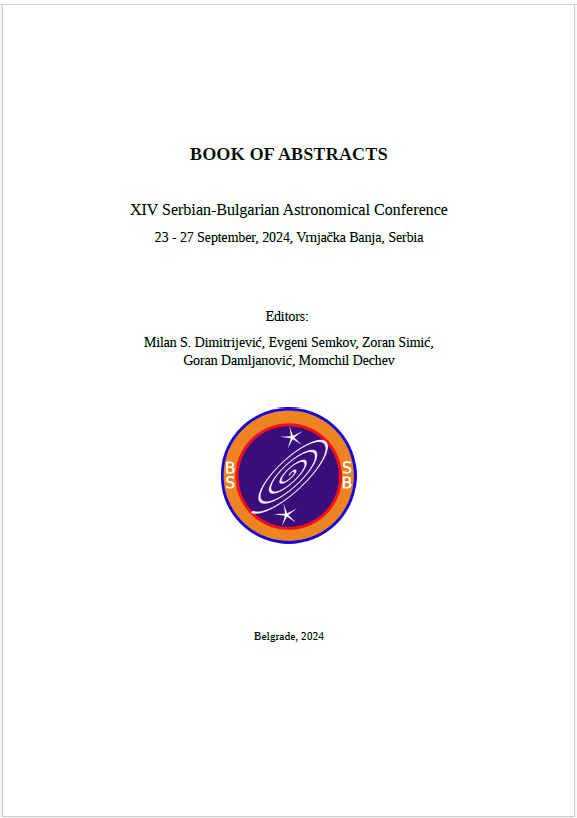GRAVITY-BASED STRUCTURE ANALYSIS OF THE MOLECULAR CLOUD ORION A
Hristiyan Mihaylov and Orlin Stanchev
Publication
BOOK OF ABSTRACTS: XIV Serbian-Bulgarian Astronomical Conference, Page 23, https://doi.org/10.69646/14sbac20a
BOOK OF ABSTRACTS: XIV Serbian-Bulgarian Astronomical Conference, 23 - 27 September, 2024, Vrnjačka Banja, Serbia. Editors: Milan S. Dimitrijević, Evgeni Semkov, Zoran Simić, Goran Damljanović, Momchil Dechev
Published: 17. 11. 2024.
Abstract
Gravity is a long-range interaction and plays important roles in most astrophysical processes in the molecular clouds, at a multiple of physical scales. To understand the importance of gravity at different scales and to provide a global picture of gravity in clouds we apply the G-Virial method (Guang-Xing Li et al., 2015) to two star forming regions Orion A and Perseus. G-Virial is also the name of a physical quantity, which is a measure of the gravitational boundedness of a system of particles. The G-Virial method takes in 13CO(1-0) data cubes as input and generates G-Virial maps, thus it offers a robust approach to decomposing the data into different regions which are gravitationally coherent. We found an increase in the importance of gravity towards the centers of the individual molecular condensations. We also quantified the properties of the regions in terms of mass-radius and mass-velocity relations. Evaluating the virial parameters based on the G-virial can be used for diagnostics for gravitational boundness at different physical scales in the clouds.




